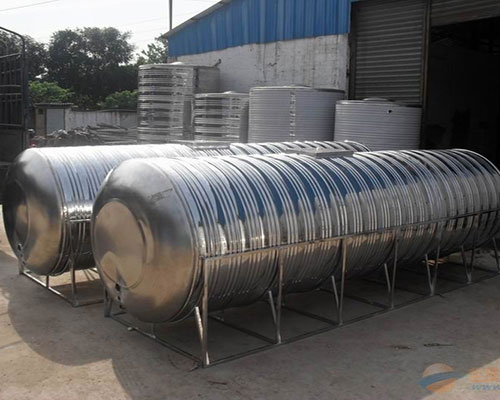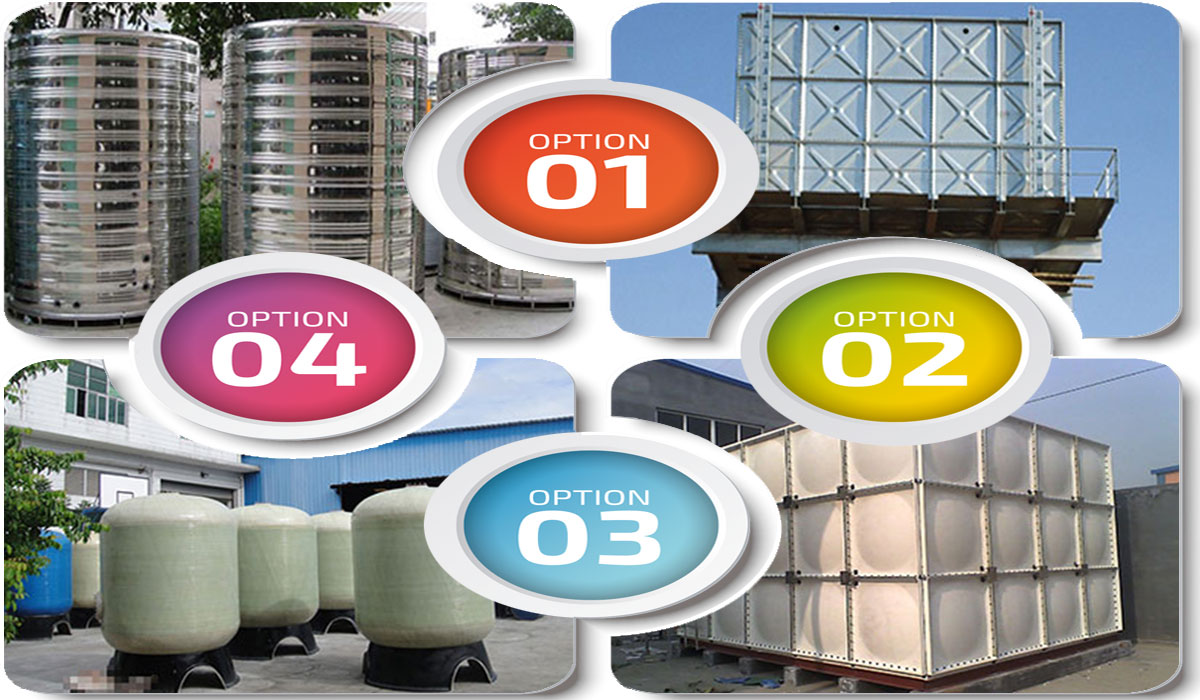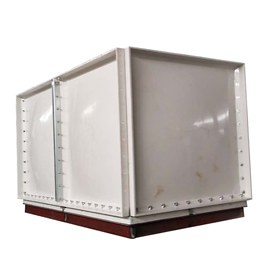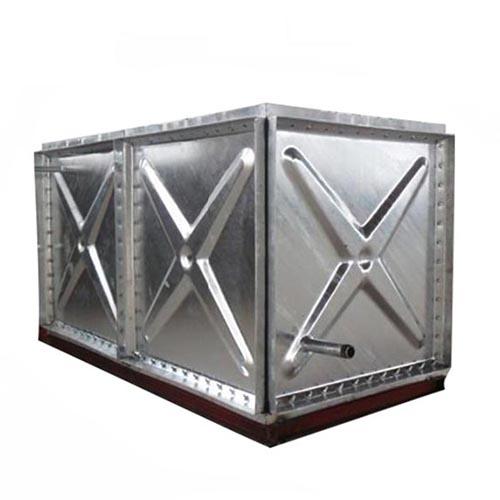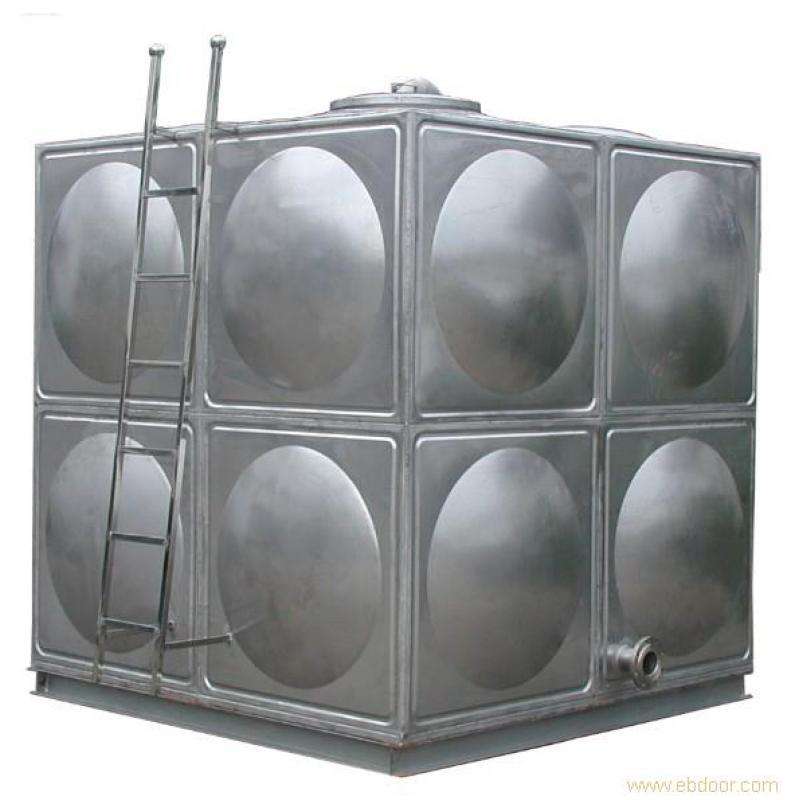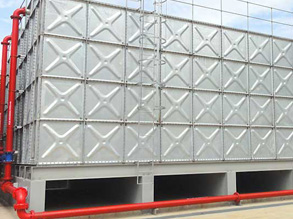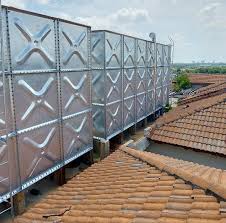Chapter 1 // WHAT IS A WATER TANK?
The definition of water tank refers to a container for storing water. The main purpose of water tank is to serve as a storage of water for drinking, and widely used in farming, industry and fire department.
There are various types of water tank available in the market which include:
Chemical contact tank:
It is made of polyethylene construction which retains chemicals for treatment with product water.
Ground water tank:
It is with carbon steel lines, acquires water from surface or from a dug well then storing it in large volume for consumption during peak seasons.
Elevated water tank:
It can be referred to the water tower which creates pressure at the ground level outlet sufficient enough to supply for domestic and industrial requirements.
Vertical cylindrical dome top tanks:
It is a horizontal cylindrical tank that are commonly used for transport which has a capacity of 200 liters to several million gallons. Its low-profile creates a low center of gravity for the purpose of maintaining equilibrium for vehicle transport like trailers and truck.
Hydro-pneumatic tank:
It is a horizontal storage tank with pressure providing a surge free delivery of stored water for distribution. It is the best type of tank used for transporting storing water.
Among these five above types, the usage of water tanks are varies according to its design. In every respective design, the water tank should do no harm to the water being stored especially on drinking water tank.
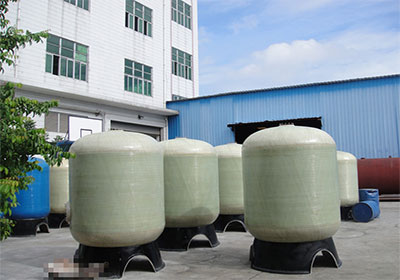
Chemical contact tank
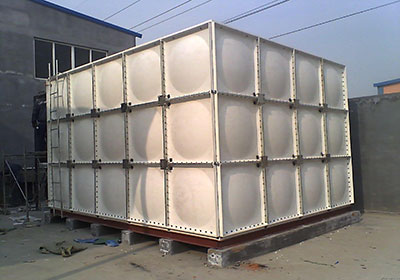
Ground water tank
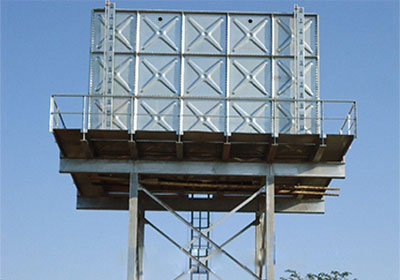
Elevated water tank
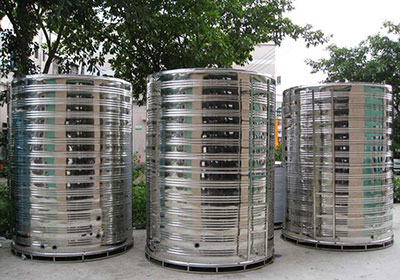
Hydro-pneumatic tank
Chapter 2 // HOW DO WATER TANKS WORK?
The water tanks work based on its main purpose for conserving water for the benefit of people and environment. The similarities on the process of how water tanks work is obvious.
When water is scarce from the direct water supply, the use of stored water in a tank will come to life and do its duty. It is the time when the stored water will meet the needs.
As with pressure tanks, when water is turned on at a fixture in a building, the compressed air in the water tank will act like a spring. It pushes out to supply water through water pipes even on the highest floor of the structure.
On the other hand, gravity tank acts differently with the pressure tank. Gravity water tanks are the most common tank that is being installed for low rise structures like in residential buildings as it is built either separately or on the top of the structure.
Gravity water tanks stored water from above, thus it is even the one being used for storing rainwater. It supplies water from above using gravitational force to fixtures of the building below. It does not require any electricity as gravity can be acquire naturally.
Chapter 3 // WHAT ARE WATER TANKS USED FOR?
Water tanks are used for storing water for various applications like drinking water, irrigation agriculture, fire suppression, and in industries.
Chapter 4 // WATER TANK APPLICATION
The common uses of water tanks are:
Rain harvesting
For the purpose of water conservation, especially on areas where water is not abundant, rainwater harvesting is very applicable. It is the process of accumulating and storing of rainwater to reuse it rather than simply allowing it to run off to the ground pointlessly.
Drinking water storage
Storing water from drinking purposes is a common application. What is extraordinary is to know the myth in storing drinking water. It is that water can expire.
Literally speaking, water won't expire but will be contaminated chemically or biologically. Once it tastes stale, simply rotate the container to purify it. To store drinking water indefinitely, keep it in a dark, cool area, not directly on a concrete surface or harsh fumes and chemicals.
For irrigation agriculture purposes
Irrigation and agriculture tanks plays a great role as a large consumer to water tank suppliers. Due to climate change causing unpredictable dry growing seasons, lots of farmers and growers in the agriculture industry prefer to acquire water storage tanks to help offset the dry spells to protect their crops avoiding low profits on their harvests.
Fire cisterns
Even on a well developed cities where enough fire hydrants and winding pipes are installed, in case that something could go wrong during fire emergencies is still high. This is why a backup water storage should come into play which is technically called as fire cisterns. For the purpose of protecting the whole community during unexpected fire extremity, fire departments are installing fire cisterns in respective areas where establishments is compactly present and accessibility to direct water supply is not that attainable.
Thermal storage
Thermal storage tank or commonly referred as hot water storage tank, has its purpose on storing hot water for space heating or domestic use.
Because of its high specific heat capacity, water is a good medium for heat storage. Water can store more heat per unit of weight when compared to other substances and is non-toxic and low-cost.
In addition, like in laundry shops, and even for household bathing and washing, water heaters play a significant role to make it work with the aid of some mechanical energy.
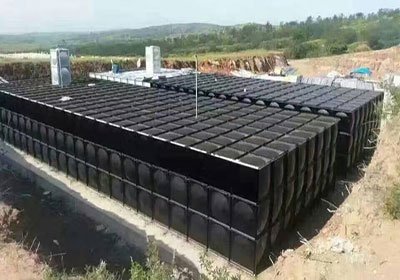
Rain harvesting
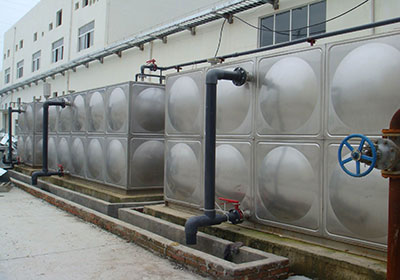
Drinking water storage
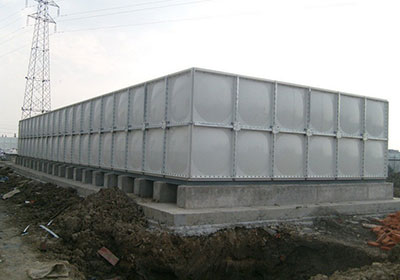
Irrigation agriculture
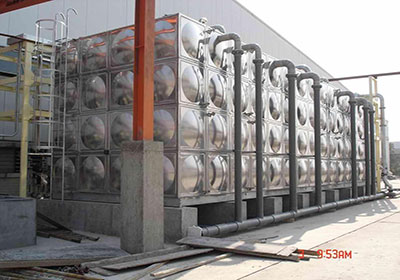
Fire cisterns
Chapter 5 // TYPES OF WATER TANKS
Water tanks come in various models according to its uses. There are types of water tanks based on shape, size, dimensions, and materials being used.
The different types of water tanks according to materials are:
• polyethylene water tanks
• concrete water storage tank
• plastic water tanks
• steel water tanks
• stainless steel water tank
• polyethylene water tank
• pvc water tank
• grp water tank
The different types of water tanks according to size are:
• 200 litre water tank
• 1000 litre water tank
• 2000 litre water tank
• 5000 litre water tank
• 5000 litre poly water tanks
• 10000 litre water tank
• 100 gallon water tank
• 200 gallon water tank
• 250 gallon water tank
• 500 gallon water tank
• 1000 gallon water tank
• 2000 gallon water tank
The different types of water tanks according to shape are:
• square water tank
• round water tank
• flat plastic water tanks
• rectangular rainwater tanks
Plastic water tanks come in different types:
• black plastic water tank
• white plastic water tanks
• big plastic water tanks
• small plastic water tanks
• round plastic water tanks
• square plastic water tanks
Rainwater collection tanks come in different types:
• rainwater collection tanks
• rainwater harvesting tank
• steel rainwater tanks
• plastic rainwater tanks
• small rainwater tanks
• large rainwater tanks
• rectangular rainwater tanks
• domestic rainwater tanks
• round rainwater tanks
Poly water tanks come in different types:
• black poly water tanks
• small poly water tanks
• large poly water tanks
• portable poly water tanks
• 5000 litre poly water tanks
• round poly water tanks
• square poly water tanks
Potable water tanks or commonly known as drinking water tank, should be chosen well accordingly as drinking is the most crucial purpose of a water tank.
For home water tank, you can use small round water tanks with the size enough to cover every family member's required daily usage.
Underground water storage, on the other hand, serves best for agricultural, fire suppression, or industrial purposes as underground water tank could have a tendency to have some leaking susceptible for contamination that is no longer good for drinking.
Chapter 6 // WATER TANK CONSTRUCTION
Water tank construction procedure involves the following:
Getting Permission of the Water Tank Construction
Preparation for Water Tank Installation
Excavation for the Water Tank
Installation of the Water Tank
Except for elevated water tank, these types of water storage tanks does not need excavation. Its base may need to be fixed directly into the ground if it’s not an overhead water tank design put on top of the supplied structure.
Elevated water tank design uses gravitational energy to supply water to fixtures in the building that is why it is common on high rise buildings with overhead water tank located at the its roof top. Overhead water tank types may vary but its process of water flow shows the same.
Chapter 7 // WATER TANK DESIGN
Circular water tank design example are the most common types of water tank available in the market. Even tanks made up of concrete appears in circular shape too since water tank design calculations on this shape provides a stronger and durable performance.
Reinforced concrete water tank design can be done both in circular or rectangular. Compared to circular, rectangular water tank design example its advantage is that it can be constructed more easily. As for underground water tank design example, rectangular shapes are preferable.
Chapter 8 // HOW DO WATER PRESSURE TANKS WORK?
Water pressure tanks store pressurized water that is intended for distribution to different areas. Water pressure tanks work by using drops in pressure below a certain point to initiate the pump to replenish the water and raise the pressure.
Water pressure tank sizing has a capacity from 20 pounds per square inch (psi) or more which also act as reservoirs that holds extra water in the system. Water pressure tank psi represents the tank pressure performance of discharge.
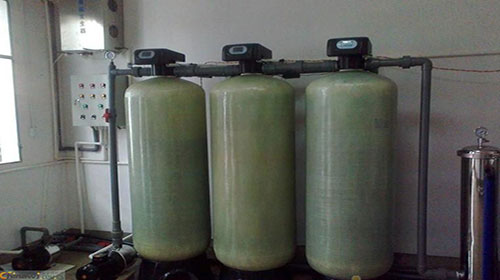
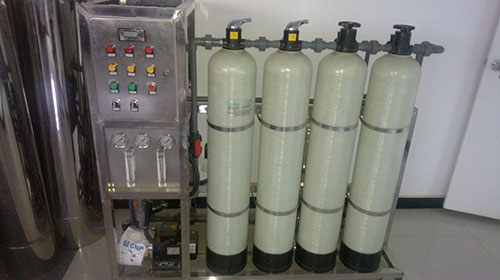
Chapter 9 // HOW DO GRP WATER TANK WORK
GRP water tanks or known as glass reinforced plastic tanks works the same as with other water tanks. With its material, GRP water tank work provides higher performance.
GRP tanks is an inexpensive, lightweight and extremely strong tanks. It is easily formed using moulding process. More traditional water tanks have been using GRP storage tank because of these mentioned reasons.
The fibers composing the GRP tanks prevents buckling in compression which made it potentially strong. Many storage tank companies are now aiming to use GRP on their water tank material.
Mainly for storing water, GRP storage tank can store from 125 liters up to 2,000,000 liters of water. It is designed in a comprehensive size and configuration to cater individual needs of consumers.
GRP sectional tanks incorporate hot press moulded GRP panels to ensure a maximum dimensional stability and consistency of quality.
GRP water tanks is manufactured in compliance with an ISO9001:2001 quality control system to BS EN 13280:2001. Available in the market are either internal or externally flanged base arrangement, with fully self-draining base option.
GRP water tank installation is assembled on site by fully skilled engineers and experts to provide 100% control of installation.
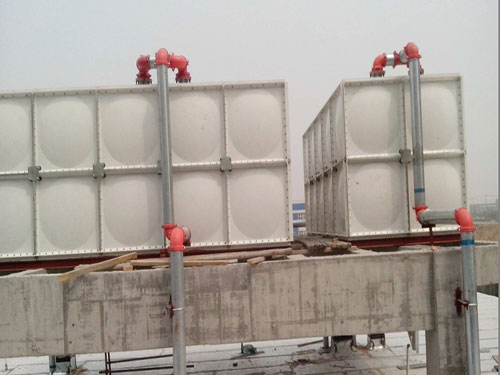
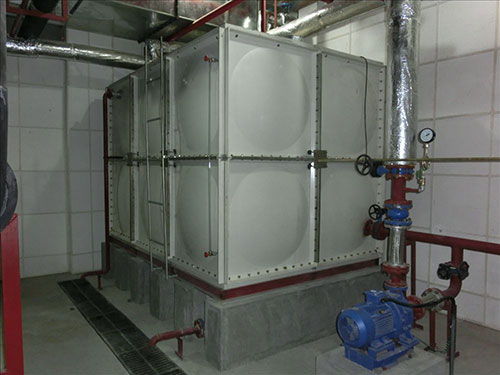
Chapter 10 // HOW DO STAINLESS STEEL WATER TANK WORK?
Stainless steel water tank work efficiently as it won't easily corrode providing a safety to the user. Either from the inside of the tank or on its outside surface, stainless steel water tank is easy to clean.
The primary difference in between stainless steel and carbon steel is the chemical element called chromium. Chromium is the medium that oxidises the neutralised oxygen seeping into the metal's surface which provides as a protective shell of the material.
Being stainless, however, literally it can still be stained and will corrode but not easily compared to plain steel.
There are different grades of stainless steel. Those with a greater resistance to marine environments is the highest quality. Nonetheless, its strength and durability of all the grade types is almost the same.
Stainless steel water tank is quite expensive. Due to this reason, consumers use this for specific purpose mostly those which needs extra length of resistance from corrosion.
Stainless steel can be bought with a price almost doubled from the Poly water tanks. It has a strength harder than a plastic water tank but will greatly depend on the manufacturer of the steel material being used specially on the portion of the base.
Maintenance of stainless steel water tank is easy. It can be done simply by wiping and washing them down with fresh water.
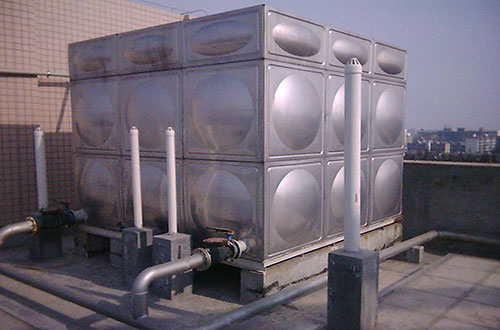
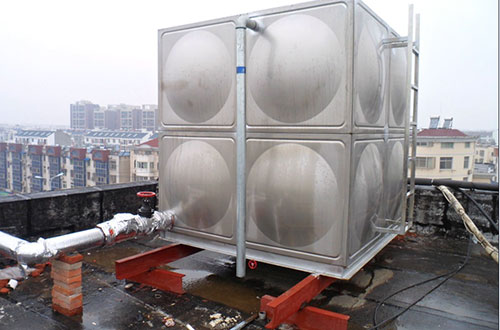
Chapter 11 // WATER TANK REPAIRING
How to repair water tank can be done with or without the help of an expert. For small leaks and malfunctions, a repair kit is all you need.
For basic water tank repair, simply follow this procedure:
Ensure that the tank is empty, drain all remaining water inside.
Remove ragged parts of the rupture or damage.
Cut a section to cover the opening by a margin of about 1 to 2 inches.
Mix a batch of epoxy resin with its catalyst.
Apply enough amount of resin around the tank's rupture, covering the area that the patch will be placed over.
Set the patch in place.
Cover the top of the patch with additional resin, making sure to coat the seam between the patch and the tank.
Let the patch be dry overnight, and preferably 24 hours before using the tank again.
However, for more technical repair, calling an expert is advised.
Chapter 12 // HOW TO CLEAN WATER TANK?
Water tank cleaning can be tiring but ensuring the water inside your tank to be clean and bacteria-free is very important. Below is the basic water tank cleaning procedure:
Drain the water
Open the outlet valve or tap to empty all stored water from the tank.
Remove the water at the bottom of the tank by scooping it with a bucket.
Remove remaining water out of the tank by using a sponge. Vacuum dry the tank to ensure its dryness.
Clean the inside of the water tank
Make a cleaning mixture. hot water with laundry detergent powder or liquid can create a good mixture as a tank cleaning solution.
Make a cleaning mixture. hot water with laundry detergent powder or liquid can create a good mixture as a tank cleaning solution.
Scrub the inside of the tank with a brush or abrasive sponge while applying a good amount of pressure. From side to side horizontally is the right direction to remove sludge and slime from within. Avoid steel brush as it may scratch the tank walls and surface.
If available, it is much better to use a power washer to clean tough sediments and residues.
Baking soda is a good medium to remove particular dirt on your tank walls. By sprinkling a small amount of baking soda then scrubbing it with brush will get off the unwanted dirts which cannot be removed by soap solution alone.
Scrub the corners and joints as special attention is needed to remove dirts from this areas and it needs extra time compared to the plain surfaces. Small toothbrush can help in cleaning portion.
Rinse thoroughly once satisfied with the cleaning result. Rinsing can be done with a hose to spray down interior walls making sure all the nooks and every corners has been completely cleaned up.
Remove remaining liquid and residue through cleaning with a vacuum.
Flush your tank's hoses and pipes by putting cleaning solution to remove sticking sediment and dirt inside.
Disinfect the water tankUse 1 gallon of bleach for a 1,000 gallon tank
Disinfecting water tank can be done through the help of a chlorine bleach with the following proportions listed below:
• Use 4 cups of bleach for a 250 gallon tank
• Use ½ gallon of bleach for or a 500 gallon tank
• Use ¾ gallon of bleach for a 750 gallon tank
• Use 1 gallon of bleach for a 1,000 gallon tank
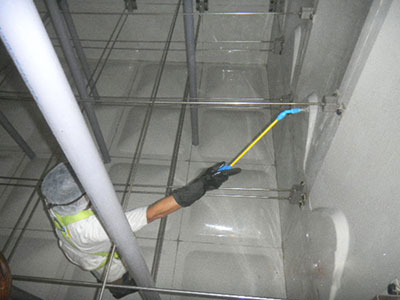
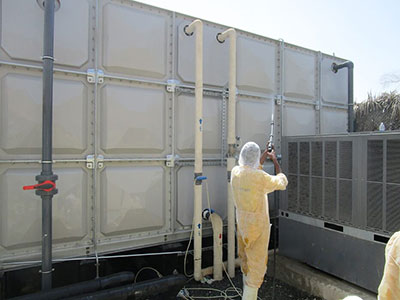
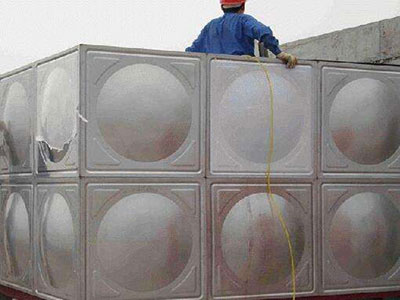
Chapter 13 // HOW TO INSTALL A WATER TANK?
To install water storage tank ensures a slightly different requirements as per types and design but the overall procedure follows the steps applicable below:
Position the tank to prepare its base
Ensure all tank connections like pipes and hoses
Follow the procedure as instructed from the manufacturer
Fix the placement of the tank to avoid tilting
Chapter 14 // WHAT SIZE WATER TANK SHOULD I GET?
The water tank size you should get will depend on the capacity required of usage. There are available water tank calculator online than can initially compute your water consumption but for larger purposes, an advice from an expert is necessary.
For first time purchase, it is preferred to acquire a smaller size water tank and if a planning for expansion, then it would be the best time to acquire for a larger one with tank material suiting on your needs. This way, you will then be guided on which tank material suits best on your location and supply needs.
Chapter 15 // HOW MUCH DO WATER TANKS COST?
Water tank price will vary according to types, size, and brands. Either for light duty or heavy duty, research is a must prior to buying.
Getting an idea on how much a water tank cost, manufacturers guide will help best. Every manufacturers have their own range of prices but the crucial thing to know is to select for the manufacturers producing the quality that you needed most.
Either you are planning to purchase for an affordable one or an expensive water tank, what will really matter is the one that is reasonable according to your budget. Reasonable in terms that you are really paying for the quality that you expect.
Sizes matters as well in addition to brands. For household purposes, smaller size maybe required, therefore, lesser cost is expected. But for large companies, since larger water tank is needed, then an extra price allocation should be done.
Lastly, the environment where water tank will be installed will matter too. Like those put up nearby seashores or on sea vessels, then stainless steel water tank is really needed of higher grade must be chosen to resist extreme corrosion, therefore, price of this kind is expected to be a bit costly than ordinary water tanks.
After all, buying a water tank will all depend on the consumer's needs. Reviews from different users will only serve as a guide prior to purchasing one but what is needed most is the personal research and contact of every water tank manufacturers. No positive or negative review of a water tank can change the real performance of the item purchased.

Hot Water Tanks
related posts
